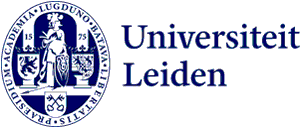
Exhibition unveils Central Asian part of Silk Road
An exhibition at Oude UB takes visitors to the historical Silk Road. Old maps, clothes and jewellery reflect the rich heritage of the cities of Central Asia and their inhabitants.
Richly decorated headdresses and jewellery, maps of imposing mosques and striking photos of people on the street. Welcome to the Silk Road Cities exhibition at Oude UB. The curators are Leiden researchers Elena Paskaleva, a lecturer in Critical Heritage Studies, and Gabrielle van den Berg, Professor of Cultural History of Iran and Central Asia. The Silk Road has its origins in antiquity and was a network of caravan routes that facilitated trade between the Eastern world and Europe. Through this route travellers and the local population got to know one another’s religions and cultures, says Paskaleva.

Symbolic jewellery
The two researchers already put on an exhibition about the Silk Road in 2019, with mainly maps and photos. Now special items of jewellery and clothing with a symbolic meaning can be seen. Some pieces of Turkmen jewellery marked the owner’s transition from one phase in life to the next, Paskaleva explains. Items of silver jewellery were supposed to increase the chances of having a healthy baby. According to tradition, girls wear more jewels as they reach marriageable age. Once women have a few children, they wear fewer jewels. There are also richly decorated doppi – skullcaps – at the exhibition. Some have a white cock’s tail to protect the wearer from the evil eye.

Spotlight on Central Asia
The Chinese part of the Silk Road has always received plenty of attention, says Van den Berg, so this exhibition deliberately focuses on the Central Asian part. Antique photos and postcards show mosques and mausoleums in areas that are in present-day Afghanistan, Iran, Kazakhstan, Turkmenistan and Uzbekistan. ‘We are shining a light on the cities and people rather than the nation states that they now belong to,’ says Van den Berg.
The postcards, prints and jewellery mainly come from Paskaleva’s private collection. As a lecturer in Critical Heritage Studies, she studies the medieval architecture of Central Asia. She uses these objects for her lectures on material culture along the Silk Road. The photos show how the monuments and cities changed over time. Together, the two researchers started the Central Asia Initiative to draw more attention to the study of Central Asia in the Netherlands and Europe. Paskaleva: ‘We do so through research, lectures and now this exhibition.’
The initiative was initially funded by the Asian Modernities and Traditions focus area in Leiden and then by the Islam in Central Asia LUCIS programme. The researchers are now working together in the Dutch Research Council (NWO) project Turks, Texts and Territory: Imperial Ideology and Cultural Production in Central Eurasia.
Text: Linda van Putten
Photos: Fien Leeflang
